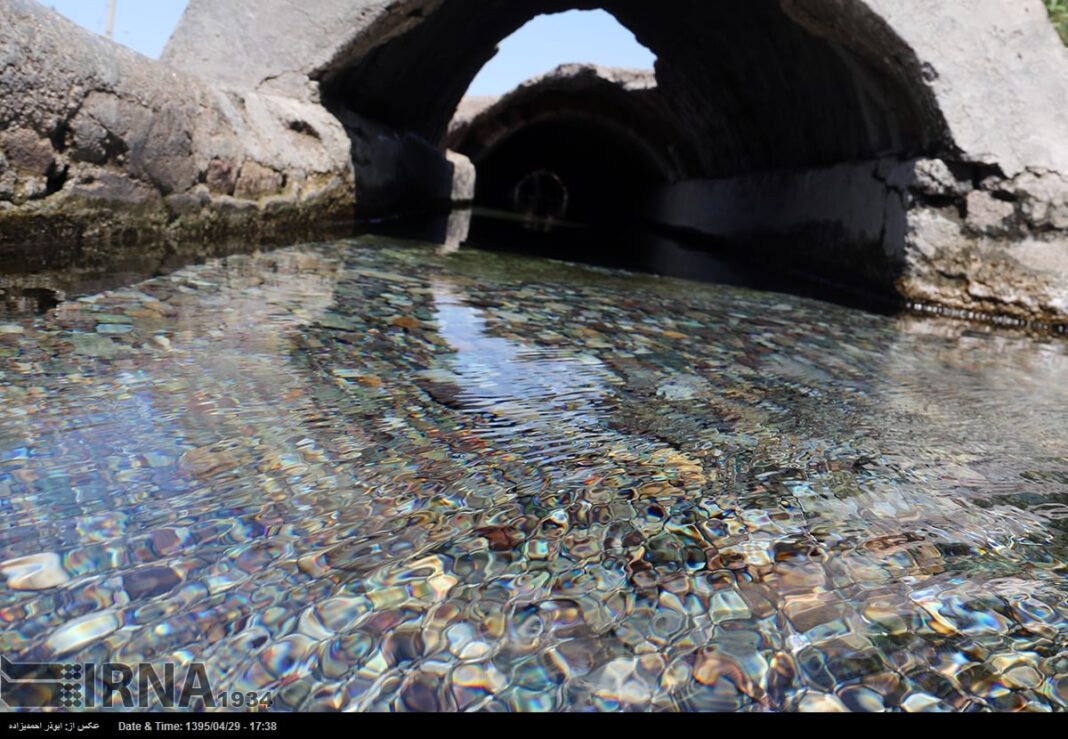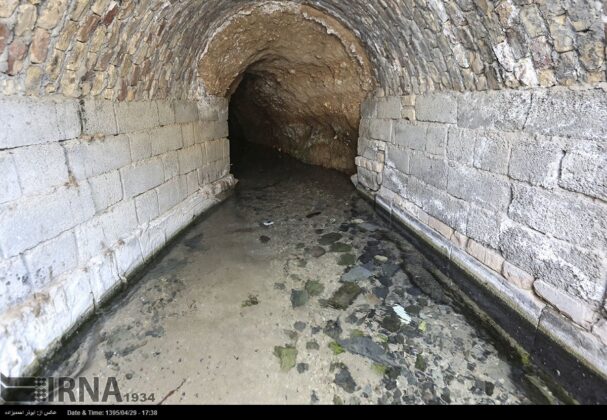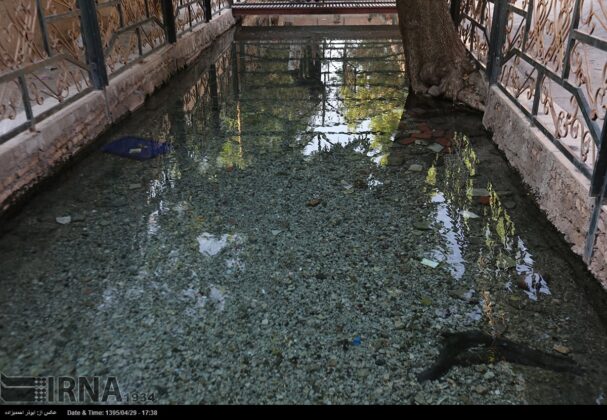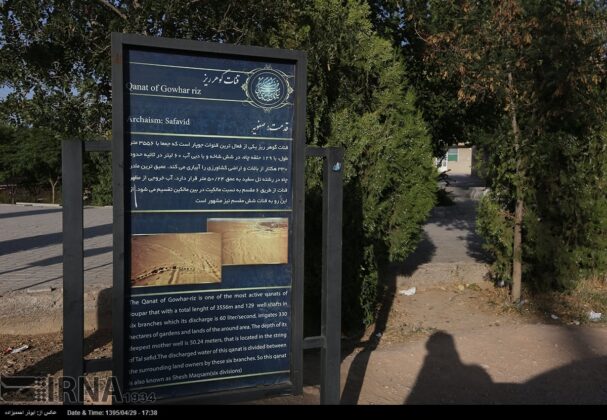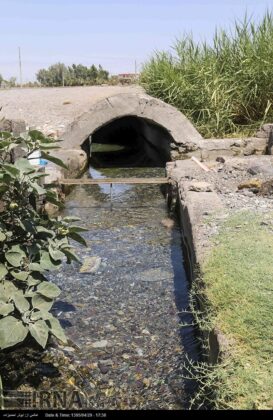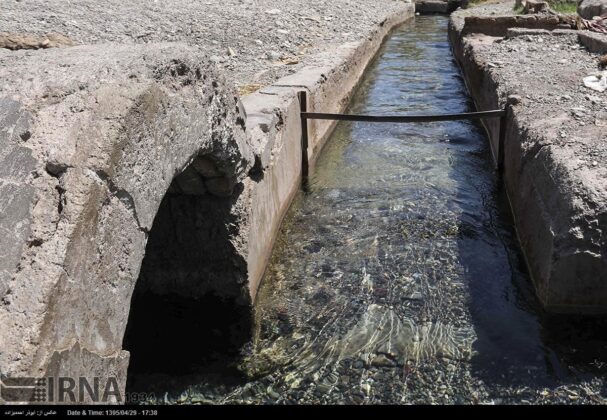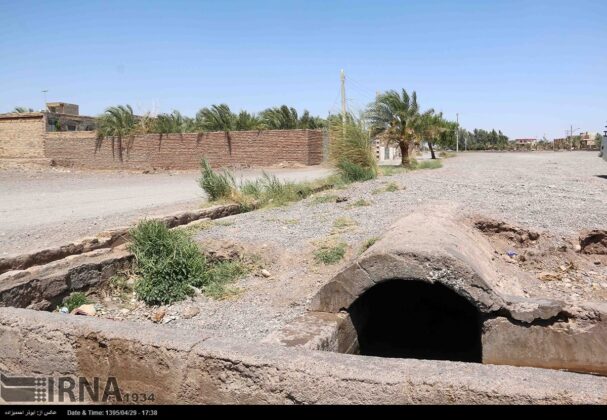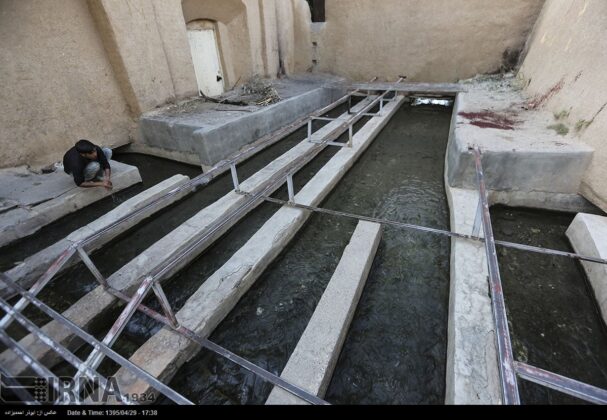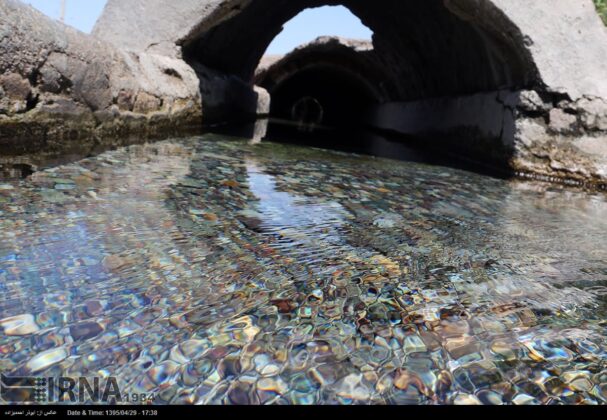These qanats are considered as the sources of life in the province. In the city of Bam, some of these qanats come out of the desert to irrigate palm trees while the passage of time has not been able to harm them.
Three qanats of Gohar-Riz Jupar, Akbarabad and Qasemabad of Kerman province have been registered in the UNESCO’s World Heritage List, and are visited by thousands of tourists each year.
Gohar-Riz qanat is located on the slopes of Jupar Mountains, and is now considered as one of the most important qanats of the province.
This qanat is 750 years old and dates back to the Safavid era. The 3,356-metre long qanat has 129 wells and irrigates almost 330 hectares of lands in the city of Jupar.
One of the advantages of such qanats is that their water is sourced from faults.
Akbarabad and Qasemabad in the east of Kerman are also among the qanats that have huge amounts of water. They date back to the late Qajar and Pahlavi dynasties with a length of about four kilometres.

Qasemabad qanat’s irrigation speed is about 90 litres per second while that of Akbarabad is 60 litres per second. These two provide water for about 300 hectares of gardens in the region.
In recent excavations on the walls of Bam, qanat inscriptions from the Achaemenid era have been discovered.
Extracting underground waters through qanats is one of the wonderful inventions by mankind which has played a crucial role in Iran’s agriculture since ancient times.
Most of the historians and researchers have attributed the technology of qanat building to Iranians and consider Iran as the birthplace of qanats.
Qanat is one of a series of well-like vertical shafts, connected by gently sloping tunnels. They create a reliable supply of water for human settlements and irrigation in hot, arid and semi-arid climates.
Throughout the arid regions of Iran, agricultural and permanent settlements are supported by the ancient qanat system of tapping alluvial aquifers at the heads of valleys and conducting the water along underground tunnels by gravity, often over many kilometres.
The qanats representing this system include rest areas for workers, water reservoirs and watermills. The qanats provide exceptional testimony to cultural traditions and civilisations in desert areas with an arid climate.
What follows are photos of these qanats retrieved from various sources:
